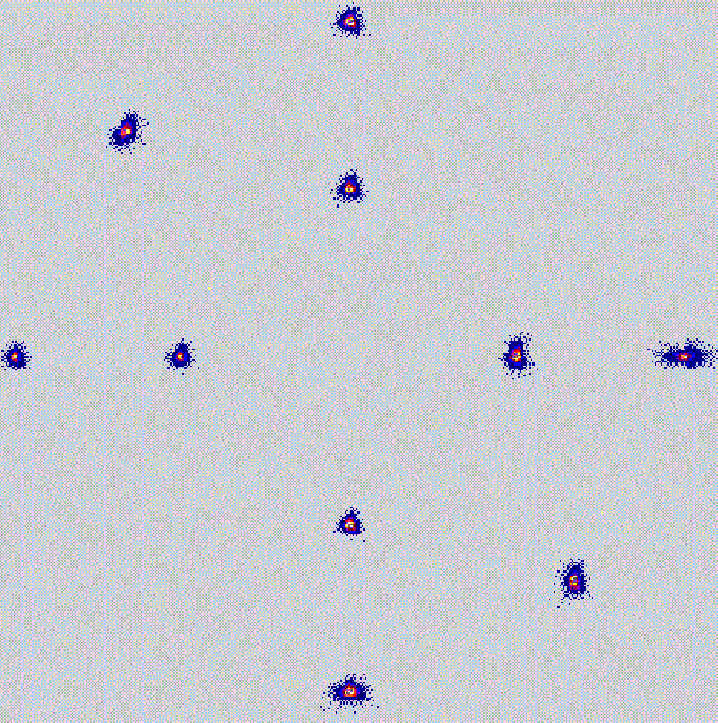 |
The PSF of the X-ray telescopes depends on the source off-axis angle, i.e., its distance from the centre of the field of view (FOV). It also depends slightly on the source azimuth within the FOV. In Fig. 8 the dependence of the shape of the XMM X-ray PSF on the position within the FOV is presented, based on actual measurements during ground calibration. One can see that the PSF at large off-axis angles is asymmetric, having a kind of ``bean'' shape. The exact shape of the PSFs needs to be determined in orbit, because full mirror illumination by the X-ray source is required for an accurate measurement (which is not the case on-ground due to finite source distance). The calibration files will be updated in due time to include the azimuthal shape of the mirror module's PSF.
For the two EPIC MOS cameras, the PSF is also affected at a level of a few times 10-4 (integral relative intensity) by scattering off the RGA rib structures.
It is important to know the shape of the PSF at different positions in the FOV, e.g., to use the correct extraction areas for source photons. In Fig. 9 we show the dependence of the radius at which 90% of the total energy is encircled, W90, on the off-axis angle. Note that beyond an off-axis angle of about 10' part of the source flux is lost off the edges of the CCD chips, especially at high energies, where the wings of the XMM PSF are most prominent. This loss of part of the photons in the PSF wings leads to the apparent decrease of W90 above 3 keV in Fig. 9.
 |
The off-axis vignetting in the two telescopes with an RGA has a dependence on angle with respect to the RGAs' dispersion direction. A source at an off-axis position perpendicular to the dispersion direction will be vignetted by a different amount to one at a position parallel to the dispersion direction. Detailed in-orbit measurements will be performed to quantify this effect.